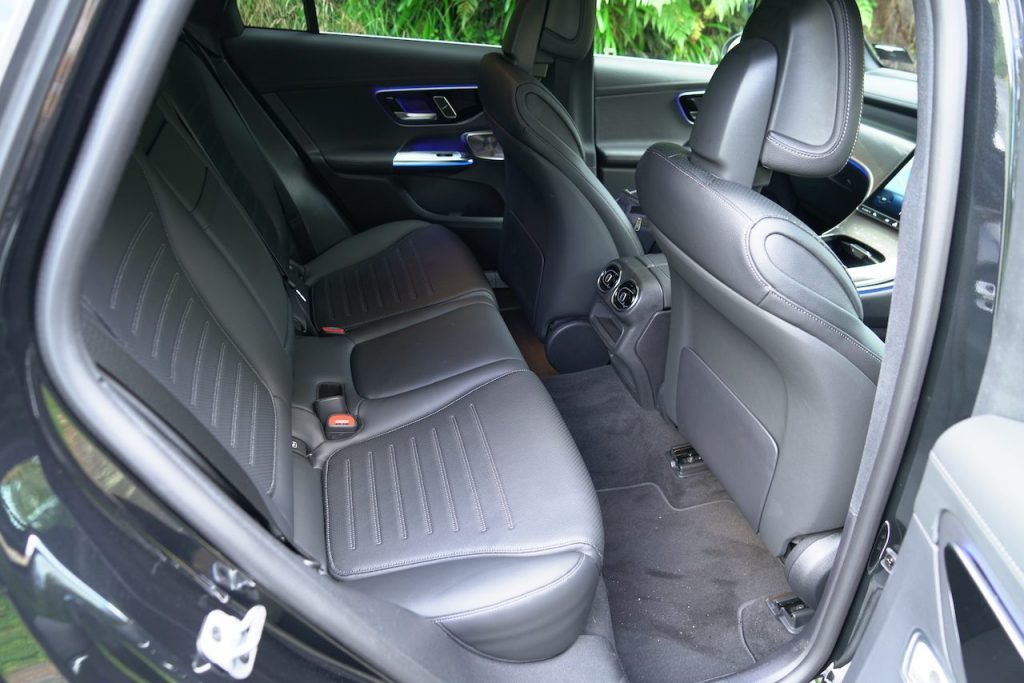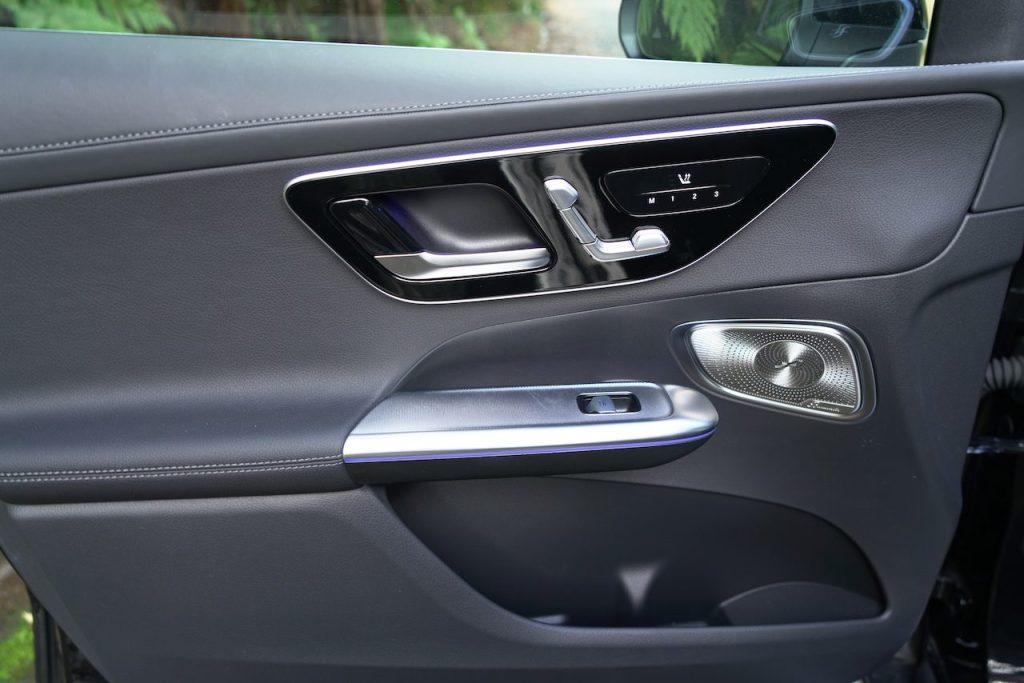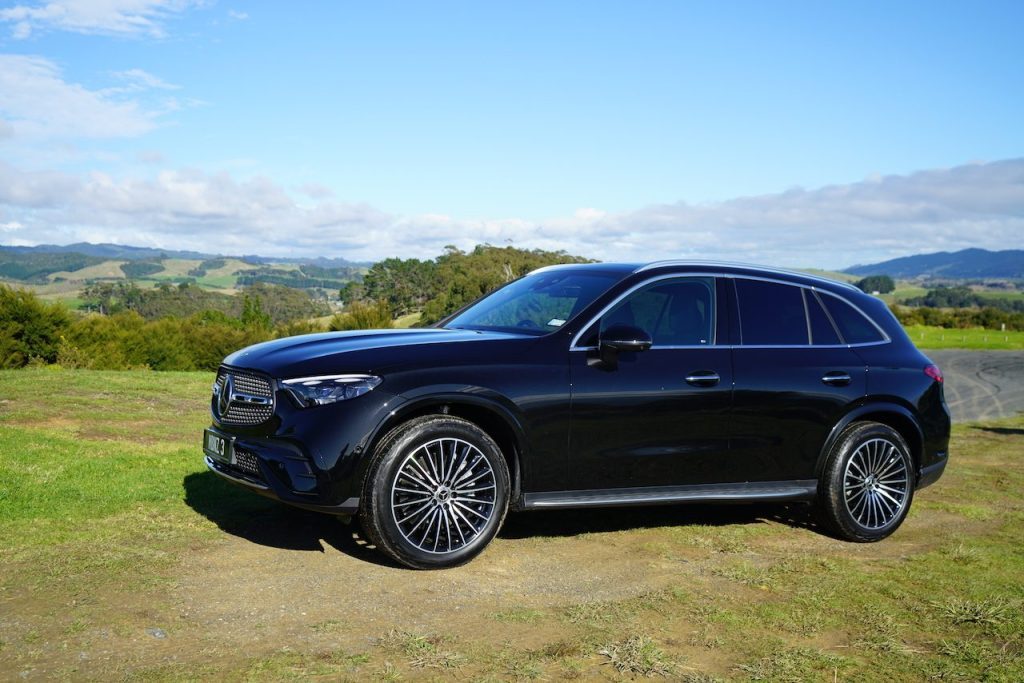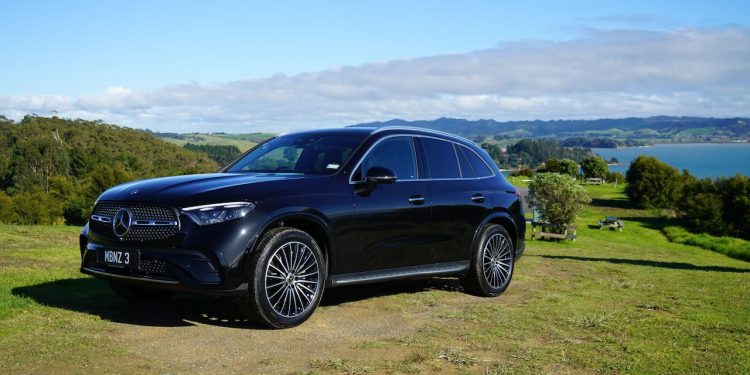Mercedes-Benz GLC 300 4Matic – First NZ Drive
Last week, Mercedes released details of its updated GLC, the popular family SUV now into its second generation and available here as a hybrid only for the time being. How does it go in Kiwi conditions, you might be wondering?
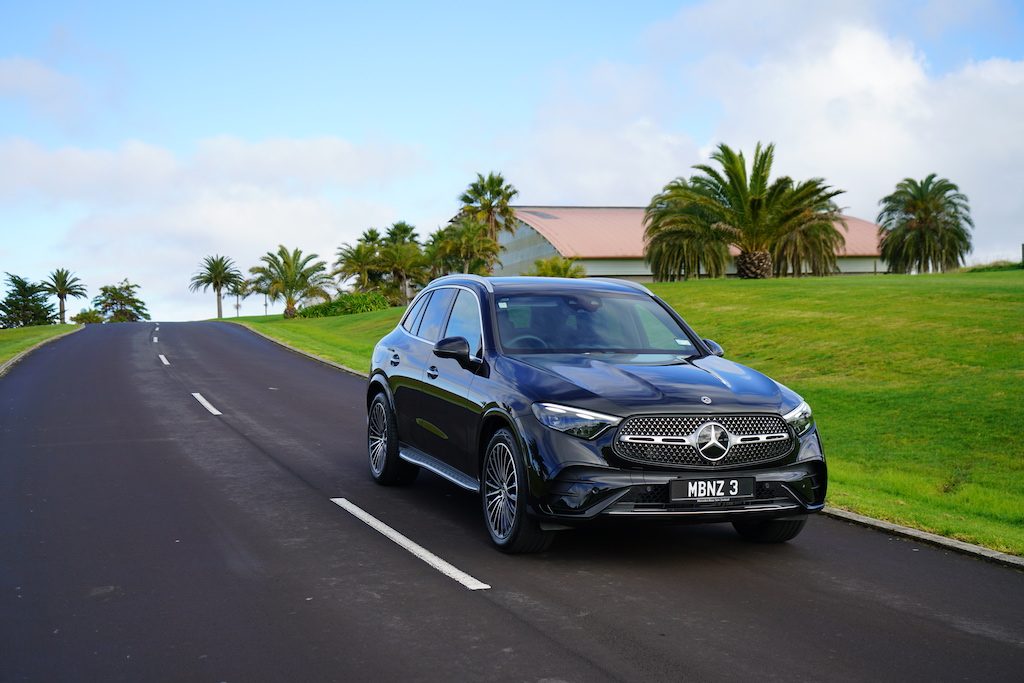
As mentioned, this shares its powertrain with the C 300 sedan, a 2.0T mated to an integrated starter generator that adds 17kW and 200Nm to the output of the 2.0T (190kW/400Nm). While no system power is quoted, performance improves as does fuel economy, the figure down overall by 0.5L/100km despite a 69kg weight gain.
With the new electrified powertrain, you’re instantly aware of the ISG after the engine stops and restarts at the first give way sign or stop lights you encounter. One second there’s no engine noise, the next it is up and running as if by magic. The ISG also facilitates gliding and energy recuperation, for improved fuel mileage.
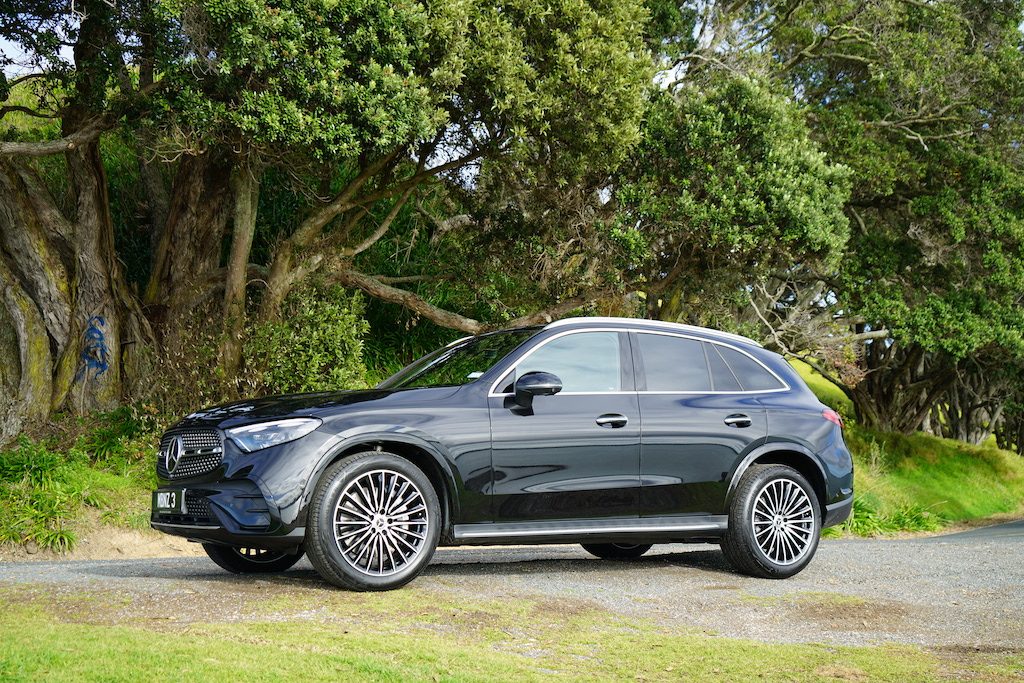
The 2.0 mild hybrid is good for 190kW @5800rpm and 400Nm from 2000-3200rpm. We encountered this same powertrain last year in the C 300 and thought it was properly up to speed. Here it’s more of the same, with added performance and improved fuel efficiency. The additional 200Nm from the ISG is welcome and with added grunt the GLC 300 should complete a zero to 100 run in 6.2sec (vs 5.8sec for the C 300), pretty quick for a 2.0T machine that weighs almost two tonnes wet. Helping it along is a slippery nine-speed automatic transmission with paddles on the wheel should the urge take you.
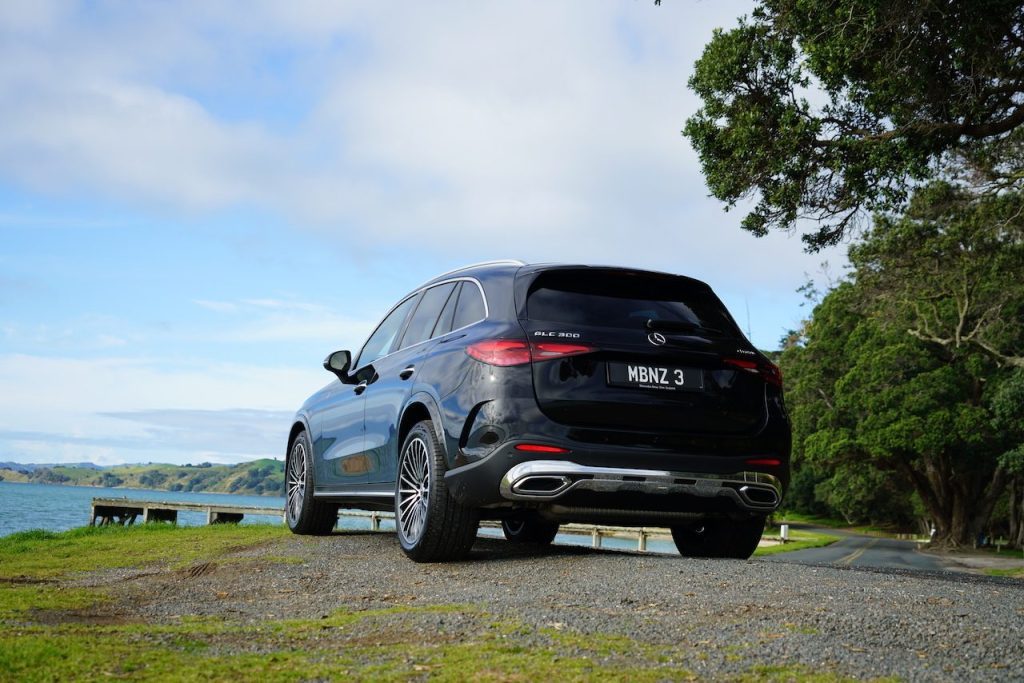
In Sport mode, the transmission is more sensitive to your driving needs while Comfort mode is just that, the damping relaxed, the ride supple. It feels appropriately firm in the Sport setting as you up the ante, still with an accommodating ride quality, though in town you’d opt for Comfort or maybe Eco. And on the eco theme, our vehicle was registering a long term fuel efficiency figure of 8.7L/100km (the quoted combined figure is 7.7) while on the launch run the mean was 11L/100km, though most of this was on the demanding Seabird Coast Road or country byways. Sticking to 100km/h isn’t easy as the motor is turning at a trifling 1400rpm in top gear but adaptive cruise helps rein things in.

With so many new EVs on test these days, it’s refreshing to pilot something that relies mainly on a vibrant turbocharged engine. This one sounds like a proper Sport Utility Vehicle, with the emphasis on excitement. There’s a rasp as revs rise that’s unusual in an IL4, and this performs heartily in the 3500-4500rpm band. Less is required in town running naturally. It feels brisk too and even more dynamic than the original GLC, though the added weight is evident.
However, the lower stance and wider tracks enhance dynamics. Pitch it into turns at pace and it just rounds them up dutifully. We didn’t push the envelope too much given general winter road dampness but along with its AWD status it feels composed and confident in corners, holding a line like a champ. Brakes are sound too, while steering has a decent helping of heft, if you like that. It’s a genuinely competent drive, with excellent ride comfort and sound deadening (our vehicle featured the Plus Package which includes acoustic glass).
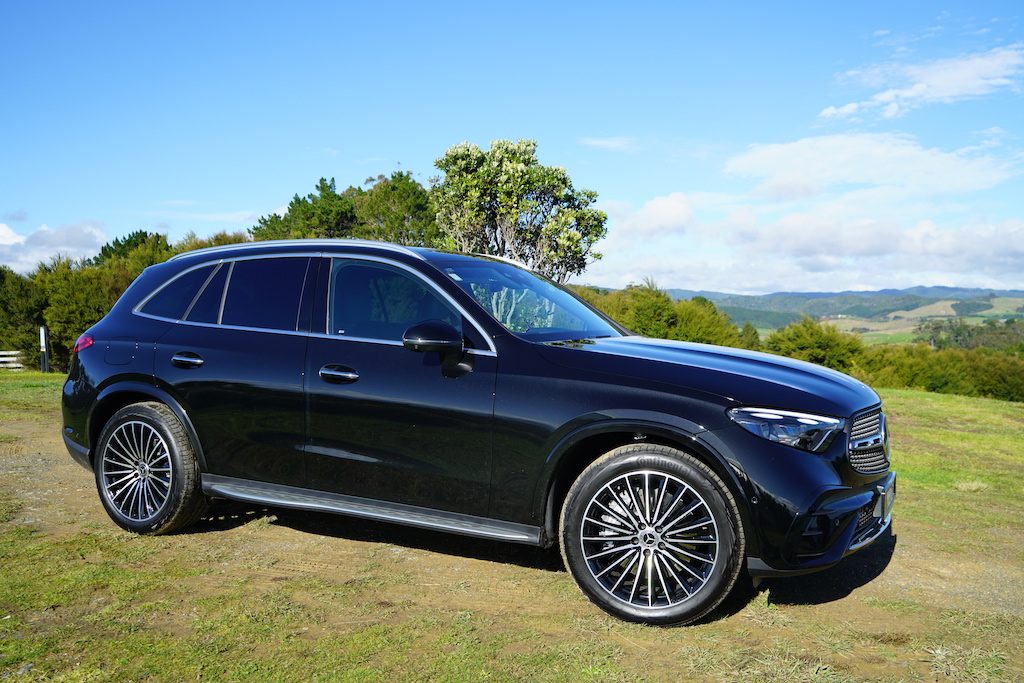
The cabin is much more modern compared with the original, with its dual digital screens. Most controls have been relegated to the central touchscreen, angled towards the driver. There’s the usual column-mounted gear selector, while drive modes are a bit of a stretch to the opposite side. But the dual screens and the lack of physical buttons add elegance, as does the ambient lighting in the turbine-style air vents.

For those with the original, the performance and dynamic upgrades alone will be enticing, along with reduced fuel consumption thanks to the mild hybrid aspect. The improved aesthetics either side of the acoustic glass are the icing on the cake. Just be aware that all this goodness does come at a price (kicks off from $113,900 before Clean Car Fee).
